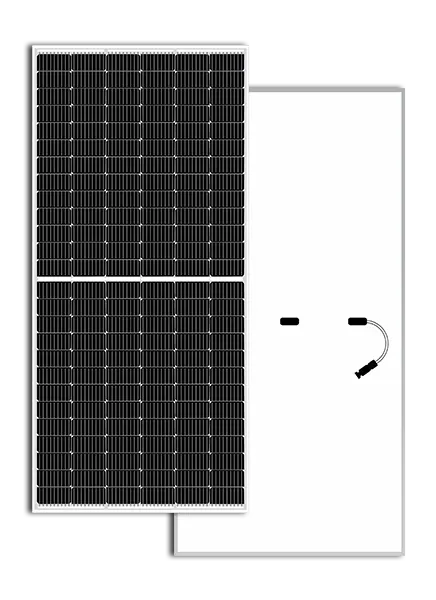- Module Power Range: 460-490 Wp
- Efficiency upto 20.89 %
- Power Tolerance: +4.99Wp
M6 - GLASS TO BACKSHEET

Glass to Backsheet
M6 - PIX MPH 156
156 Cells
Maximum Power Output - 490 Wp
Breaking Boundaries with Glass-to-Backsheet Technology
Glass-to-Backsheet (G2B) solar modules, exemplified by the M6 PIX MPH 156 model, represent a breakthrough in solar photovoltaic technology. In this comprehensive guide, we explore the unique features, operational principles, advantages, and versatile applications of these innovative modules, showcasing their pivotal role in advancing the efficiency and reliability of solar energy systems.
Understanding Glass-to-Backsheet Modules
Glass-to-Backsheet modules integrate solar cells between a transparent glass front and a robust backsheet, providing a streamlined and durable design. The M6 PIX MPH 156 model is at the forefront of this technology, combining the benefits of glass and backsheet materials to optimize performance.
Working Principle
The operational principle of Glass-to-Backsheet Modules involves harnessing sunlight through the transparent glass surface, initiating the photovoltaic process within the solar cells. The backsheet provides structural support and protection to the cells, ensuring a reliable and long-lasting solar module.
Advantages of Glass-to-Backsheet Modules
(a). Enhanced Durability: The combination of a robust backsheet and a tempered glass front enhances the overall durability and resistance to environmental factors, ensuring a longer lifespan.
(b). Streamlined Design: The G2B configuration streamlines the module's design, offering an aesthetically pleasing and compact solution for various solar installations.
(c). Improved Weather Resistance: Glass-to-Backsheet modules are designed to withstand diverse weather conditions, making them suitable for installations in a wide range of climates.
Applications
The M6 PIX MPH 156 model finds diverse applications across different sectors
(a). Residential Rooftop Installations: Ideal for homeowners seeking a visually appealing and durable solar solution for residential rooftops.
(b). Commercial and Industrial Projects: Suited for large-scale solar installations, contributing to the energy needs of businesses and industries with a reliable and efficient design.
(c). Architectural Integration: The streamlined design of Glass-to-Backsheet modules allows for seamless integration into building structures, serving both functional and aesthetic purposes.
Maintenance and Care
Regular maintenance is crucial to ensure the sustained efficiency and longevity of Glass-to-Backsheet Modules - M6 - PIX MPH 156. Periodic cleaning to remove dirt and inspections for any signs of wear contribute to optimal performance.
Conclusion
Glass-to-Backsheet Modules, particularly the M6 PIX MPH 156 model, stand at the forefront of solar technology, providing a blend of durability, efficiency, and aesthetics. As the world embraces sustainable energy solutions, these modules play a pivotal role in shaping the future of solar energy. Whether powering residential homes, industrial complexes, or architecturally integrated structures, Glass-to-Backsheet Modules contribute to a cleaner and more sustainable energy landscape.
Product Features
Advanced Bypass Diode Configuration
Aesthetic Design
Durability
Eco Friendly Manufacturing
High Efficiency
Superior Performance